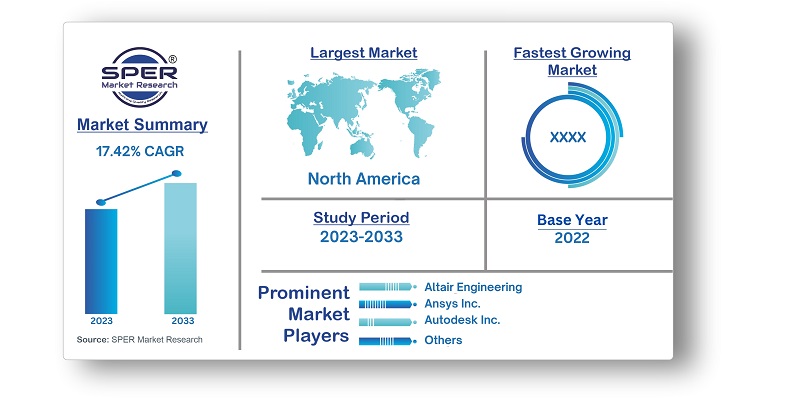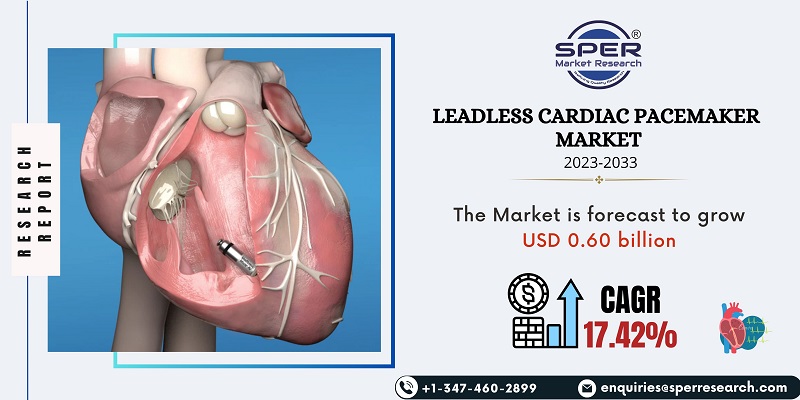
Leadless Cardiac Pacemaker Market Growth, Trends, Size, Scope, Revenue and Future Outlook
Leadless Cardiac Pacemaker Market Size- By Type, By Technology, By Condition, By End User- Regional Outlook, Competitive Strategies and Segment Forecast to 2033
| Published: Feb-2018 | Report ID: HLCA1805 | Pages: 1 - 108 | Formats*: |
| Category : Healthcare | |||
- February 2022: Abbott recently introduced a dual-chamber leadless pacemaker device as a part of the AVEIR DR i2i pivotal clinical trial. This unveiling represents a notable advancement in leadless pacing technology, with the first patient in the pivotal study being implanted with Abbott's investigational Aveir dual-chamber leadless pacemaker. This milestone showcases the significant progress achieved in the field of leadless pacing technology.
- January 2022: Medtronic plc has received regulatory approval from Japan's Ministry of Health, Labor, and Welfare to sell and have the Micra AV Transcatheter Pacing System (TPS) reimbursed. The company intends to launch this product in the market in June 2022.


| Report Metric | Details |
| Market size available for years | 2019-2033 |
| Base year considered | 2022 |
| Forecast period | 2023-2033 |
| Segments covered | By Type, By Technology, By Condition, By End User |
| Regions covered | Asia-Pacific, Europe, Middle East and Africa, North America, Latin America, Others |
| Companies Covered | Abbott Laboratories Inc., BIOTRONIK SE & Co. KG, Boston Scientific Corporation, Edward Lifesciences Corporation, Lepu Medical Technology, MEDICO S.p.A., Medtronic Plc, SORIN S.p.A, Terumo Corporation, Vitatron, others |
- Cardiologists
- Electrophysiologists
- Heart Rhythm Specialists
- Medical Device Industry Professionals
- Patients with Bradycardia
- Others
| By Type: |
|
| By Technology: |
|
| By Condition: |
|
| By End User: |
|
- Global Leadless Cardiac Pacemaker Market Size (FY’2023-FY’2033)
- Overview of Global Leadless Cardiac Pacemaker Market
- Segmentation of Global Leadless Cardiac Pacemaker Market By Type (Micra Transcatheter Pacing Systems, Nanostim Leadless Cardiac Pacemakers, Wireless Cardiac Simulation Systems)
- Segmentation of Global Leadless Cardiac Pacemaker Market By Technology (Dual Chamber Pacemaker, Single Chamber Pacemaker)
- Segmentation of Global Leadless Cardiac Pacemaker Market By Condition (Atrial fibrillation, Atrioventricular Block, Sinus Node Dysfunction)
- Segmentation of Global Leadless Cardiac Pacemaker Market By End User (Academic & Research Institutes, Ambulatory Surgical Centers, Hospitals, Others)
- Statistical Snap of Global Leadless Cardiac Pacemaker Market
- Expansion Analysis of Global Leadless Cardiac Pacemaker Market
- Problems and Obstacles in Global Leadless Cardiac Pacemaker Market
- Competitive Landscape in the Global Leadless Cardiac Pacemaker Market
- Impact of COVID-19 and Demonetization on Global Leadless Cardiac Pacemaker Market
- Details on Current Investment in Global Leadless Cardiac Pacemaker Market
- Competitive Analysis of Global Leadless Cardiac Pacemaker Market
- Prominent Market Players in the Global Leadless Cardiac Pacemaker Market
- SWOT Analysis of Global Leadless Cardiac Pacemaker Market
- Global Leadless Cardiac Pacemaker Market Future Outlook and Projections (FY’2023-FY’2033)
- Recommendations from Analyst
1.1. Scope of the report1.2. Market segment analysis
2.1. Research data source
2.1.1. Secondary Data2.1.2. Primary Data2.1.3. SPER’s internal database2.1.4. Premium insight from KOL’s
2.2. Market size estimation
2.2.1. Top-down and Bottom-up approach
2.3. Data triangulation
4.1. Driver, Restraint, Opportunity and Challenges analysis
4.1.1. Drivers4.1.2. Restraints4.1.3. Opportunities4.1.4. Challenges
4.2. COVID-19 Impacts of the Global Leadless Cardiac Pacemaker Market
5.1. SWOT Analysis
5.1.1. Strengths5.1.2. Weaknesses5.1.3. Opportunities5.1.4. Threats
5.2. PESTEL Analysis
5.2.1. Political Landscape5.2.2. Economic Landscape5.2.3. Social Landscape5.2.4. Technological Landscape5.2.5. Environmental Landscape5.2.6. Legal Landscape
5.3. PORTER’s Five Forces
5.3.1. Bargaining power of suppliers5.3.2. Bargaining power of buyers5.3.3. Threat of Substitute5.3.4. Threat of new entrant5.3.5. Competitive rivalry
5.4. Heat Map Analysis
6.1. Global Leadless Cardiac Pacemaker Market Manufacturing Base Distribution, Sales Area, Product Type6.2. Mergers & Acquisitions, Partnerships, Product Launch, and Collaboration in Global Leadless Cardiac Pacemaker Market
7.1. Global Leadless Cardiac Pacemaker Market Value Share and Forecast, By Type, 2023-20337.2. Micra Transcatheter Pacing Systems7.3. Nanostim Leadless Cardiac Pacemakers7.4. Wireless Cardiac Simulation Systems
8.1. Global Leadless Cardiac Pacemaker Market Value Share and Forecast, By Technology, 2023-20338.2. Dual Chamber Pacemaker8.3. Single Chamber Pacemaker
9.1. Global Leadless Cardiac Pacemaker Market Value Share and Forecast, By Condition, 2023-20339.2. Atrial fibrillation9.3. Atrioventricular Block9.4. Sinus Node Dysfunction
10.1. Global Leadless Cardiac Pacemaker Market Value Share and Forecast, By End User, 2023-203310.2. Academic & Research Institutes10.3. Ambulatory Surgical Centers10.4. Hospitals,10.5. Others
11.1. Global Leadless Cardiac Pacemaker Market Size and Market Share
12.1. Global Leadless Cardiac Pacemaker Market Size and Market Share By Type (2019-2026)12.2. Global Leadless Cardiac Pacemaker Market Size and Market Share By Type (2027-2033)
13.1. Global Leadless Cardiac Pacemaker Market Size and Market Share By Technology (2019-2026)13.2. Global Leadless Cardiac Pacemaker Market Size and Market Share By Technology (2027-2033)
14.1. Global Leadless Cardiac Pacemaker Market Size and Market Share By Condition (2019-2026)14.2. Global Leadless Cardiac Pacemaker Market Size and Market Share By Condition (2027-2033)
15.1. Global Leadless Cardiac Pacemaker Market Size and Market Share By End User (2019-2026)15.2. Global Leadless Cardiac Pacemaker Market Size and Market Share By End User (2027-2033)
16.1. Global Leadless Cardiac Pacemaker Market Size and Market Share By Region (2019-2026)16.2. Global Leadless Cardiac Pacemaker Market Size and Market Share By Region (2027-2033)16.3. Asia-Pacific
16.3.1. Australia16.3.2. China16.3.3. India16.3.4. Japan16.3.5. South Korea16.3.6. Rest of Asia-Pacific
16.4. Europe
16.4.1. France16.4.2. Germany16.4.3. Italy16.4.4. Spain16.4.5. United Kingdom16.4.6. Rest of Europe
16.5. Middle East and Africa
16.5.1. Kingdom of Saudi Arabia16.5.2. United Arab Emirates16.5.3. Rest of Middle East & Africa
16.6. North America
16.6.1. Canada16.6.2. Mexico16.6.3. United States
16.7. Latin America
16.7.1. Argentina16.7.2. Brazil16.7.3. Rest of Latin America
17.1. Abbott Laboratories Inc.
17.1.1. Company details17.1.2. Financial outlook17.1.3. Product summary17.1.4. Recent developments
17.2. BIOTRONIK SE & Co. KG
17.2.1. Company details17.2.2. Financial outlook17.2.3. Product summary17.2.4. Recent developments
17.3. Boston Scientific Corporation
17.3.1. Company details17.3.2. Financial outlook17.3.3. Product summary17.3.4. Recent developments
17.4. Edward Lifesciences Corporation
17.4.1. Company details17.4.2. Financial outlook17.4.3. Product summary17.4.4. Recent developments
17.5. Lepu Medical Technology
17.5.1. Company details17.5.2. Financial outlook17.5.3. Product summary17.5.4. Recent developments
17.6. MEDICO S.p.A.
17.6.1. Company details17.6.2. Financial outlook17.6.3. Product summary17.6.4. Recent developments
17.7. Medtronic Plc
17.7.1. Company details17.7.2. Financial outlook17.7.3. Product summary17.7.4. Recent developments
17.8. SORIN S.p.A
17.8.1. Company details17.8.2. Financial outlook17.8.3. Product summary17.8.4. Recent developments
17.9. Terumo Corporation
17.9.1. Company details17.9.2. Financial outlook17.9.3. Product summary17.9.4. Recent developments
17.10. Vitatron
17.10.1. Company details17.10.2. Financial outlook17.10.3. Product summary17.10.4. Recent developments
17.11. Others
SPER Market Research’s methodology uses great emphasis on primary research to ensure that the market intelligence insights are up to date, reliable and accurate. Primary interviews are done with players involved in each phase of a supply chain to analyze the market forecasting. The secondary research method is used to help you fully understand how the future markets and the spending patterns look likes.
The report is based on in-depth qualitative and quantitative analysis of the Product Market. The quantitative analysis involves the application of various projection and sampling techniques. The qualitative analysis involves primary interviews, surveys, and vendor briefings. The data gathered as a result of these processes are validated through experts opinion. Our research methodology entails an ideal mixture of primary and secondary initiatives.



Frequently Asked Questions About This Report
PLACE AN ORDER
Year End Discount
Sample Report
Pre-Purchase Inquiry
NEED CUSTOMIZATION?
Request CustomizationCALL OR EMAIL US
100% Secure Payment






Related Reports
Our Global Clients
Our data-driven insights have influenced the strategy of 200+ reputed companies across the globe.




















